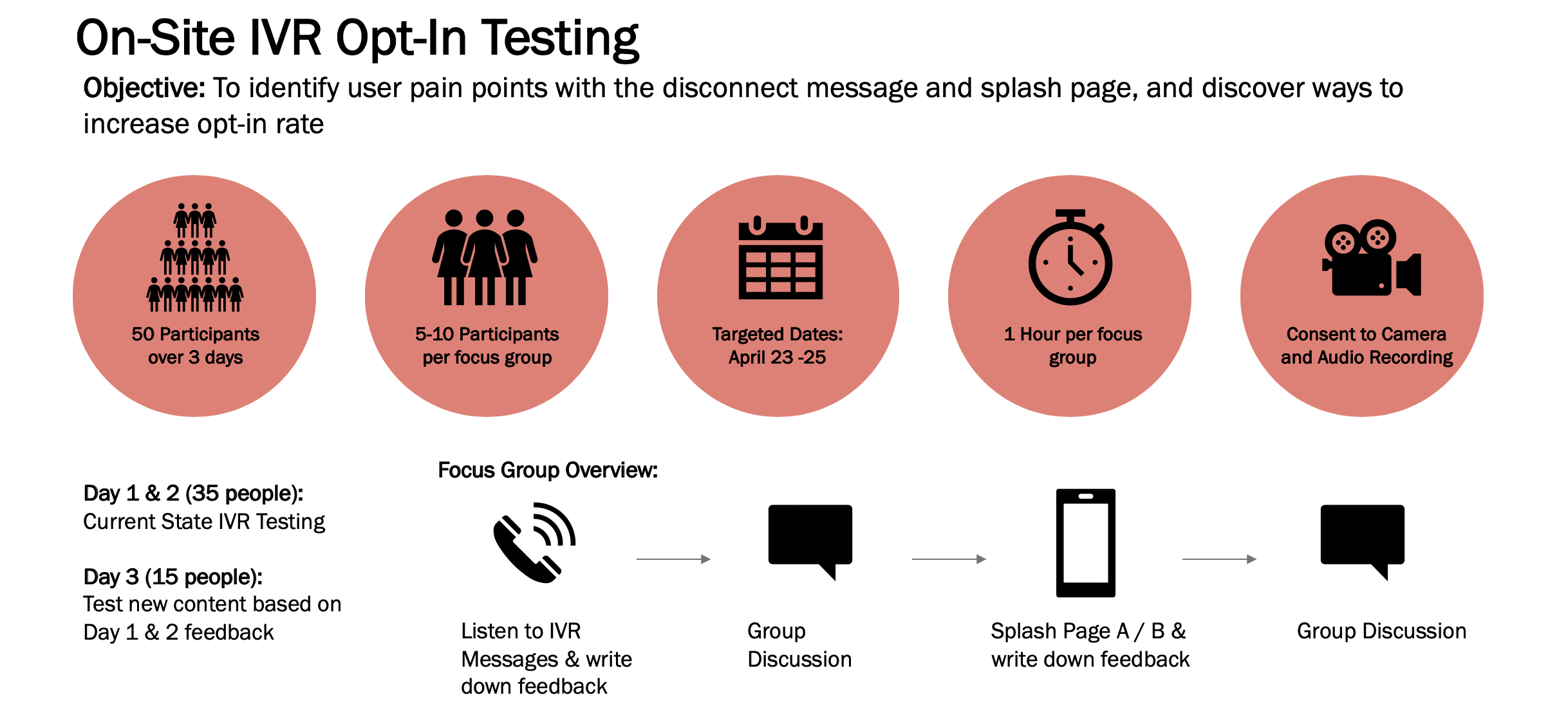Chatbot Project
Designing a Chatbot: An Accenture Strategy + Interactive Project
The time I helped create a board game to build empathy 🎲
A major telecommunications company came to Accenture and wanted to digitally enhance customer experience by developing an artificial intelligent chatbot.
problem
How might we design an artificial intelligent customer service chatbot that helps the customer without the need for a human representative?
method (1 year)
Phase 1: Current State Research (3 months)
Phase 2: Design (6 months)
Phase 3: Testing.+ Iteration (6 months)
my role:
The project team was over 50 people with different workstreams, and I was part of the customer experience team, which was focused on actually designing the customer-facing parts of the bot. I worked on these specific intents: making payments, checking data usage, and managing the overall health of the other intents. I’ll be walking through what it was like to design “Making a Payment.”
phase 1: research
Our team focused on understanding the current state of the industry (other chatbots, telecommunication competitors) and the existing customer interactions with the human customer service representatives.
We did this by:
Call Listening to recorded customer service calls
Customer Service Representative Interviews
Customer Service Representatives Focus Groups
Desktop Research of current digital customer service offerings
Competitor Analysis
Personas and customer journey mapping per intent
Insight: Making a Payment is a straight-forward experience in all of our client’s existing self-serve channels. In the app and website, if your payment information is already on file, it could be a one-click experience. If you call in, the IVR can make a payment for your bill with a simple “yes” from you. If we wanted to get people to choose the chatbot instead of the other channels, we needed to add other benefits.
Current State Experience for Entering the Chatbot
phase 2: design
Our team focused on co-creating with the client and using our research to design the initial chatbot’s information architecture. We took the initial IA’s and worked with the proper teams (visual design, artificial intelligence, and IT) to execute the chatbot design until it was live to the customer.
Based on our research, data said that customers often only have a single-intent when calling to make a payment, which is to pay their bill. If we forced customers to use the bot after they could have easily made the payment in the IVR, it would be a bad customer experience. We decided to link making a payment with similar intents like making a future payment arrangement, so a customer is able to do both once they entered the chatbot. We made the payment experience more visual and gave customers the functionality to add payment methods, schedule future payment dates, and see their bill in detail.
What Else We Did:
Client Co-Creation Design Thinking Workshop
Design initial information architecture
Partner with visual designers to create necessary wireframes and widgets
Write on-brand copy and work with the artificial intelligence team to create the conversation flows (logic behind the chatbot)
Work with client subject matter experts to define business rules and what customers can and cannot do
Participate in the Client’ IT Team’s Agile Methodology for Design Execution (Help write User Stories)
Information Architecture
phase 3: testing + iteration
Our team focused on using the data collected from customers once the chatbot was live to understand which intents needed to be improved. We then designed various qualitative tests to improve copy and content in order to improve customer satisfaction.
Challenge & Solution: We spent all our time making sure the in-chat experience mirrored what a human experience would look like. However, we noticed that the number of customers wanting to opt-into chatting with our bot from the IVR was decreasing over the time. We realized that we focused so much on the chat experience that we neglected the entrance experience for the customer. To put a band-aid solution on our IVR acceptance experience, we changed the language of the text message and IVR to provide customers more transparency on the chatbot experience. The long-term solution was to design a UX Research Plan full of constant qualitative user tests with customers to continuously evaluate the messaging and process into getting in the chatbot.
What Else We Did:
Review analytics/data (CSAT, fallout, clickthrough rate, etc.) to find areas to improve the chatbot
Design and performed: A/B Testing, Surveys, Focus Group, and Concept Testing
Piloted and launched new versions of the Bot based on research
Research Plan Overview for IVR Testing
Focus Group Research Methodology
lessons learned
Find the balance between what the Business wants (profit) and customer experience. Some ideas may seem like great Business decisions but may alienate the customer, which has long term impacts. By using both the voice of the customer and quantitative data, it makes it easier to fight for the customer’s experience
Partner with development teams early to be realistic with design. When working in a silo with just parts of the Business and being stuck in the Research phase, it was easy for us to create these big ideas that actually was a lot of effort for limited benefit. Sometimes we wanted to be flashy just because we could, but we needed to stay realistic. Looping in developers as soon as we could only helped us better build our vision.
Customers like self-serve chatbots, but only if it doesn’t act like a chatbot :) It’s easy to get discouraged when designing a product that you think customers will hate (like chatbots). In reality, customers like things that make their lives easier, and we had to keep thinking about ways we can better benefit the customer rather than getting discouraged by people’s criticism of bots.
Additional Samples of Work Available Upon Request






